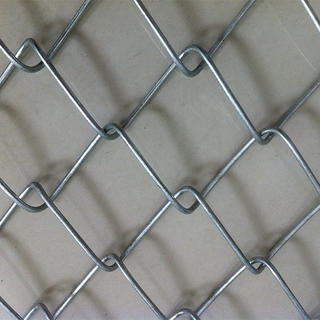Chain Link Fence is a versatile and cost-effective fencing solution made from galvanized or vinyl-coated steel wires woven into a diamond-shaped mesh pattern. Known for its durability, transparency, and low maintenance, it is widely used for residential, commercial, industrial, and recreational purposes. The interlocking wire design provides security without obstructing visibility, making it ideal for perimeter enclosures, sports fields, and animal pens.
Installation involves securing the mesh to steel or aluminum posts with tension bands and rails, ensuring structural stability. Its open weave allows wind to pass through, reducing the risk of damage during storms. Chain link fences are available in various heights, gauges, and coatings to suit different environments, with galvanized and PVC-coated options offering enhanced rust resistance for long-term outdoor use.
Easy to install and repair, chain link fencing balances affordability with functionality, serving as a practical barrier for property demarcation, safety, and crowd control. Its adaptability to uneven terrain and minimal upkeep requirements make it a preferred choice for both temporary and permanent applications across diverse settings.
Why Chain Link Fencing Is Ideal for Sports Fields and Tennis Courts
Chain link fencing is the preferred choice for sports fields and tennis courts due to its durability, visibility, and cost-effectiveness. The open-weave design allows spectators to view games clearly while preventing balls from leaving the playing area. Its galvanized or vinyl-coated construction resists rust and weathering, ensuring long-term performance with minimal maintenance. The fence's flexibility absorbs impact from players or equipment, reducing damage risks compared to rigid barriers. Installation is quick and adaptable to various perimeter shapes, making it suitable for both professional and recreational facilities. At 10-12 feet high, it contains flying balls effectively while permitting airflow for player comfort. The neutral color blends into sports environments without visual distraction. Chain link also deters unauthorized access after hours, enhancing security. For tennis courts, smaller mesh sizes (1-3/4") prevent ball passage while maintaining transparency. Its modular design allows easy gate integration and future expansions.
Chain Link Fence Wire Gauge and Mesh Size Explained
Chain link fence specifications depend on wire gauge (thickness) and mesh size (diamond openings) that determine strength and functionality. Wire gauges range from 6 (thickest) to 11 (thinnest), with 9-11 gauge common for residential use and 6-9 gauge for high-security or industrial sites. Thicker wires (lower gauge numbers) resist cutting and heavy impacts better. Mesh sizes vary from 1" to 2-1/4", where smaller openings (1-1/4") provide pet containment or ball stoppage, while larger ones (2") suit general boundaries. The mesh height (4-12 feet) and coating (galvanized, vinyl) further customize performance. For example, a 9-gauge, 2" mesh fence offers balanced security and visibility for playgrounds, while 6-gauge with 1-1/2" mesh serves prisons. Understanding these parameters ensures optimal selection for durability and purpose.
Tips for Installing Chain Link Fence on Sloped or Uneven Ground
Installing chain link fence on slopes requires adaptive techniques to maintain functionality and aesthetics. For gradual slopes, follow the contour by "racking" the mesh—adjusting the diamonds to align with the incline while keeping posts vertical. On steep terrain, step the fence by creating level sections with abrupt height changes between posts, ensuring no gaps under the mesh. Use flexible tension bands to connect mesh to terminal posts on curves or angles. Bury terminal posts deeper (30+ inches) for stability and space line posts closer (8-10 feet) on uneven ground. Concrete footing is essential for post integrity in loose soil. For a polished look, trim excess mesh at stepped sections and secure with tension wires. Always install gates on level ground, using adjustable hinges if needed. Proper planning of the slope's pitch and post placement prevents sagging and ensures uniform tension throughout the fence line.


